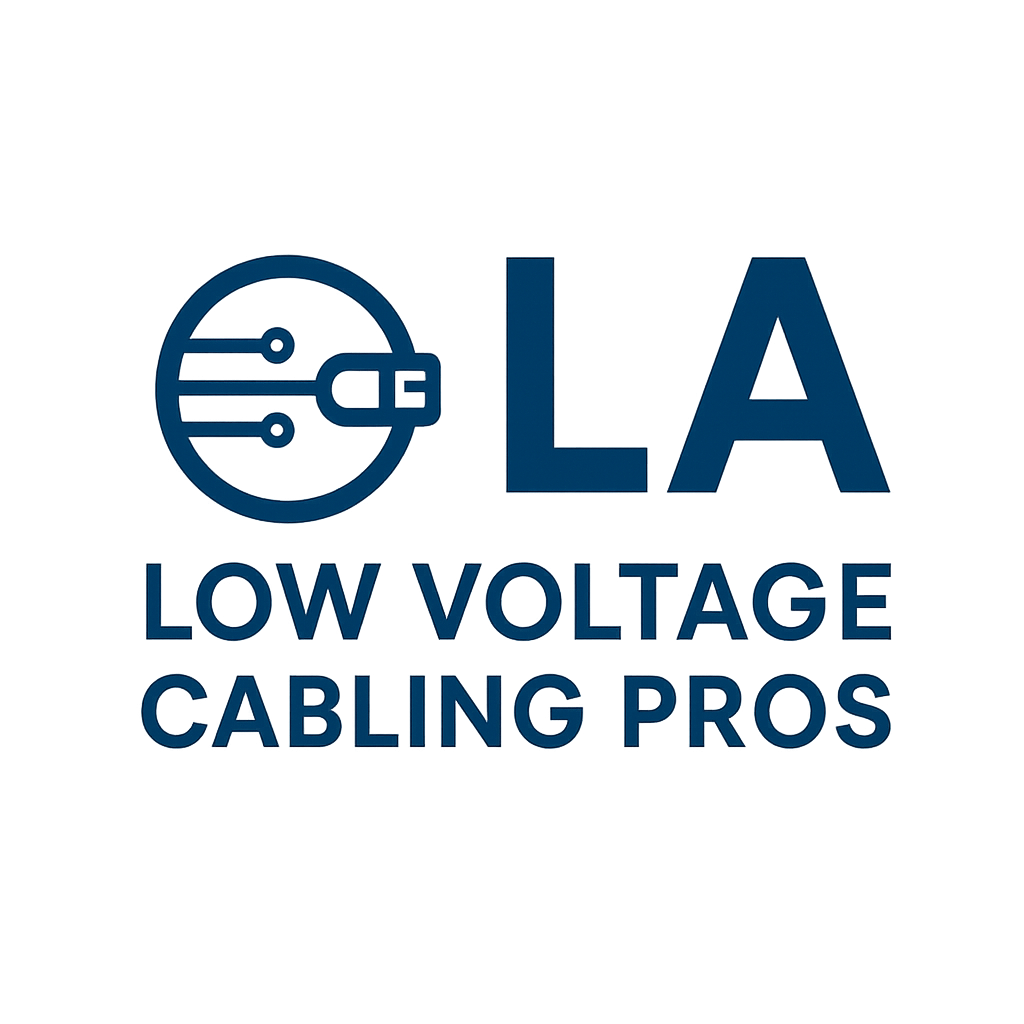Low Voltage Cabling for Offices: The Smart Way to Power Your Workplace Network
If you’re setting up or upgrading your office’s technology, low voltage cabling should be one of your top priorities. From internet and phone systems to security cameras and access control, these systems all rely on a strong cabling foundation. Installing proper low voltage cabling for offices ensures your business stays connected, efficient, and ready for future growth. At LA Low Voltage Pros, we provide expert cabling solutions to keep your office networks running efficiently.
What Is Low Voltage Cabling?
Low voltage cabling refers to electrical wiring that carries 50 volts or less, used for communication, data, and control systems rather than high-power electrical circuits. It supports everything that keeps an office running smoothly — like computers, Wi-Fi, telephones, intercoms, and security systems.
Common examples of low voltage systems include:
- Internet and data networks (CAT5e, CAT6, CAT6a, fiber optic)
- VoIP and traditional phone systems
- Access control and door entry systems
- Security cameras (CCTV and IP cameras)
- Audio-visual and conference room equipment
- Building automation and energy management systems
Installing these systems correctly keeps your office running efficiently and safely.
Why Offices Need Low Voltage Cabling
A well-planned low voltage cabling system helps your office perform better in almost every way. Here are some of the top benefits:
- Reliable connectivity – Keep your network stable and minimize downtime.
- Clean and organized wiring – Avoid messy cables that cause confusion and safety issues.
- Future-ready infrastructure – Easily upgrade or expand as your business grows.
- Improved productivity – Faster, more stable connections mean smoother workdays.
- Cost efficiency – Low voltage systems use less power and require less maintenance.
In modern offices, nearly every device depends on low voltage cabling to communicate and operate. Without it, even the fastest internet plan or best router can’t perform at full potential.
Types of Low Voltage Cabling Used in Offices
Different systems use different cabling types, depending on function and performance needs. The most common options include:
- CAT5e and CAT6 cables – For high-speed Ethernet and data transmission.
- Fiber optic cables – For long-distance or high-bandwidth connections.
- Coaxial cables – Often used for video and television systems.
- Speaker wire and audio cabling – For conference rooms and intercoms.
- Security cabling – For cameras, sensors, and alarms.
A professional installer can recommend the right combination based on your office layout, number of employees, and equipment requirements.
Benefits of Professional Low Voltage Installation
Working with certified low voltage cabling contractors ensures your system is safe, compliant, and built to last. Professionals follow state and industry standards — such as the National Electrical Code (NEC) and California Title 24 (if applicable) — to make sure your cabling meets performance and safety regulations.
Professional installation guarantees:
- Proper cable routing and labeling for easy maintenance
- Fire-safe materials and compliant pathways
- Thorough testing and certification of every connection
- Reliable performance across all connected systems
You’ll also save time and money by avoiding future repairs or rework caused by poor cabling practices.
Common Office Applications
Low voltage cabling powers a variety of essential office systems, including:
- Data and voice networks – For fast internet, VoIP, and communication tools
- Video conferencing – Stable connections for meeting software like Zoom and Teams
- Security and surveillance – CCTV cameras and motion sensors
- Access control systems – Keycard or biometric door systems
- Smart office automation – Lighting, temperature, and energy management
With a properly designed cabling system, you can run all of these technologies smoothly — without interference, lag, or data loss.
Signs It’s Time to Upgrade Your Office Cabling
If your office experiences frequent internet dropouts, messy wiring, or outdated network ports, it’s time for an upgrade. Common warning signs include:
- Slow internet or file transfers
- Network outages or unstable connections
- Confusing cable layouts or tangled wiring
- Difficulty adding new devices or workstations
- Old or damaged Ethernet cables (CAT5 or older)
Upgrading to a modern low voltage cabling system ensures your office stays competitive, efficient, and connected for the long run.
Why Work with a Certified Low Voltage Contractor
A licensed low voltage cabling company brings experience, safety, and precision to your project. They understand how to balance performance with compliance, ensuring your office meets both technical and legal requirements.
Certified professionals can:
- Design a scalable network infrastructure
- Coordinate with electricians, IT staff, and building managers
- Ensure compliance with local and national codes
- Offer warranties and post-installation support
Whether you’re moving into a new space or retrofitting an existing office, partnering with experts guarantees the job gets done right the first time. Avoiding errors is crucial to maintaining a reliable network. Check out common low voltage installation mistakes to ensure your office setup is done correctly.
Build a Smarter, Connected Office Today
Every modern workplace depends on a reliable network. Investing in low voltage cabling ensures your office’s communication systems, security network, and daily operations stay connected and efficient.
If your current setup is slowing you down, now’s the perfect time to upgrade. Contact a trusted low voltage cabling installer today to design a system that’s clean, compliant, and built for your business’s future.
